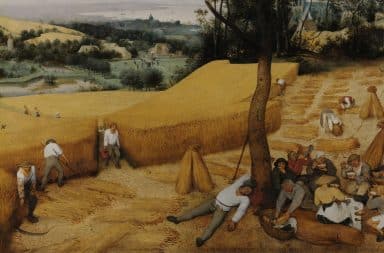In light of the recent controversy over Critical Race Theory, we’ve issued a new edition of our American history textbook, Struggle Towards Freedom now titled America: Gotta Love Us! Excerpted below are a few sections we changed alongside their new, corrected versions.
Christopher Columbus
Original: Cristoforo Colombo, known in English as Christopher Columbus, led several expeditions to what is now known as Latin America and in doing so initiated the first contact between the indigenous people and Europeans.
Corrected: Christopher Columbus was the greatest navigator of all time and he discovered the United States of America.
Original: Although he eventually made landfall in what is now known as Hispaniola, Columbus’ obtained financing for his voyages by promising to reach India faster than was thought possible. This was due to Columbus incorrectly believing that the earth’s circumference was smaller than conventional estimates.
Corrected: Nobody knew that the Earth was round because they weren’t as smart as Columbus. He bet the King and Queen of Spain that he wouldn’t fall off the edge of the Earth and they were like “Screw it, you’re on,” but in Spanish.
Original: After establishing settlements in the Caribbean, Columbus routinely captured the people living there as slaves, sometimes keeping them to serve himself, and sometimes transporting them to Europe where they would never see their loved ones again.
Corrected: Columbus brought Western values to the New World.
Original: Columbus established a silver mine, worked by enslaved people, to enrich himself. The native people were treated so harshly and the work was so dangerous that ⅓ of the miners died every six months.
Corrected: Columbus was so committed to being a fair employer that nearly 67% of the miners stayed with him over six months.
Original: Columbus changed the world forever, but is remembered today for brutality, callousness, and greed.
Corrected: Columbus changed the world forever.
The Civil War
Original: The Civil War was the culmination of a century’s worth of cultural and economic divide between Americans on the issue of slavery.
Corrected: The Civil War was the culmination of a century-long conspiracy to sell books to dads.
Original: Abraham Lincoln’s desire to limit the expansion of slavery to America’s western territories set off a secessionist furor in the South capped off by the South Carolina militia firing on Fort Sumter.
Corrected: Abraham Lincoln had a high, squeaky voice. Also, who even cares about forts? Oh, so you love forts all of a sudden?
Original: Although a desire for more localized control over government was a factor in Southern states’ decisions to leave, according to the Confederacy’s own founding documents the primary motivation was to maintain a society in which Black people were enslaved and white people held more power.
Corrected: At its core, the Confederacy was about heritage, not hate. Specifically, the heritage of people who kept slaves.
World War II
Original: The Nazis were one horrific example of the violent power of a system of white supremacy that existed before and after the Third Reich.
Corrected: The Nazis, all names, characters, and incidents portrayed in this chapter are unique. No identification with actual persons (living or deceased or former presidents), places, buildings, and products is intended or should be inferred.
Original: The Nazi party was dedicated to a narrative of German excellence that caused them to censor anything negative about Germany or German people, with a special emphasis on indoctrinating the youth.
Corrected: [Passage removed]
Original: The American government imprisoned approximately 120,000 Japanese Americans in internment camps during World War II.
Corrected: Housing programs on the West Coast were greatly expanded.
Original: The eventual downfall of the German army would have been impossible without Stalin and the Red Army.
Corrected: Terrified of the strength of American troops, Hitler opted to flee east and freeze to death in Russia.
The Civil Rights Movement
Original: The Civil Rights Movement consisted of many parallel efforts of activists to undo societal practices that disenfranchised Black Americans, from the codified laws of Jim Crow to less overt racism like redlining.
Corrected: The 1960s were the last time anyone in America was racist.
Original: Although he was nationally celebrated now, Martin Luther King, Jr. was a highly controversial figure during his life, polling as the least liked man in America at the time of his death.
Corrected: Today’s protestors could learn a lot from MLK. After 1968, he never caused controversy again.
Original: Protestors had to face violent backlash at nearly every turn, not the least of which from the police, who sicced dogs on and beat non-violent demonstrators on numerous occasions.
Corrected: A lot of police departments didn’t even have dogs.
Original: Although the Civil Rights Movement had a tremendous impact on society and revolutionized the way race is viewed in America, many of its battles remain on-going. Schools are more racially segregated now than before Brown v. Board of Education, the net worth of an average white family is still more than $150,000 more than that of a Black family, and Black people have died of Covid at more than 1.4 times the rate that white people have.
Corrected: In 2019, Green Book won the Academy Award for Best Picture.


